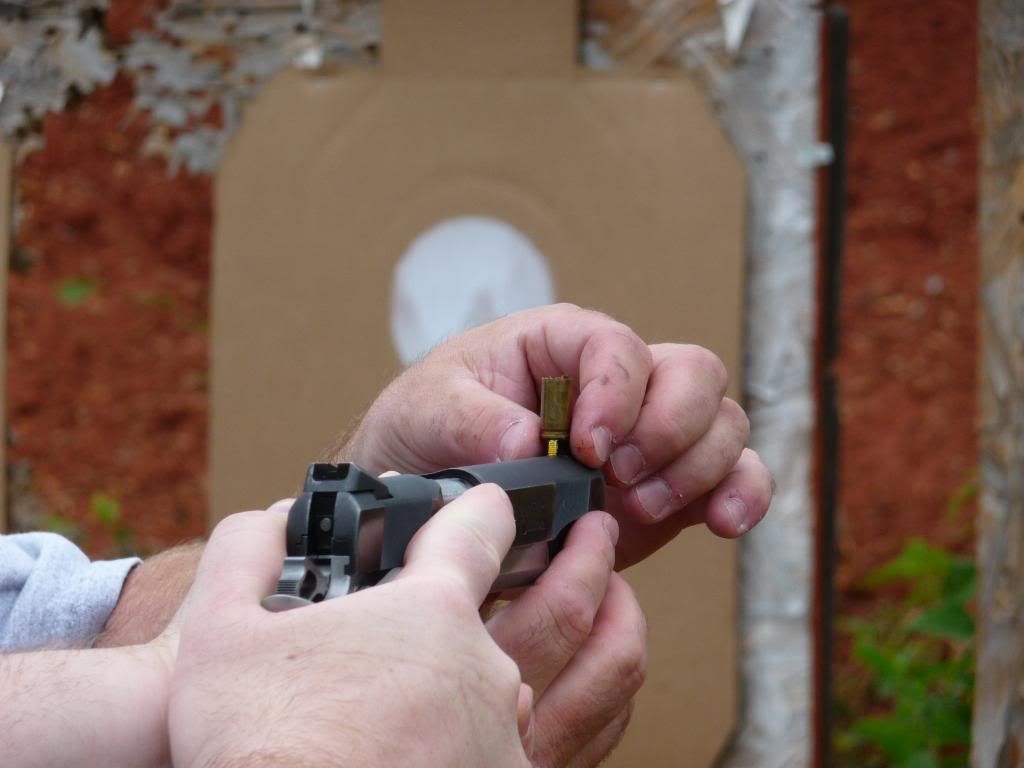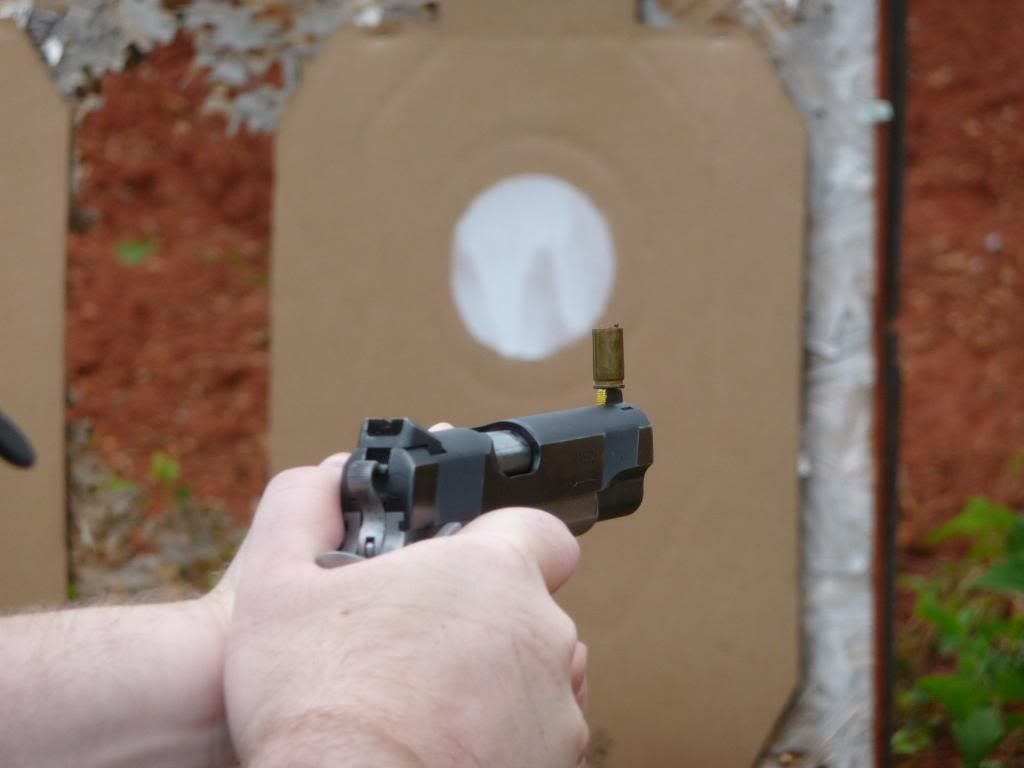-
Murder Machine, Harmless Fuzzball

Handgun Accuracy Fundamentals: Trigger Control
Often on various forums I see questions from those new to handguns and those who wish to improve their accuracy with a handgun about where they should start. Often the quality of the responses to that question leaves much to be desired since there are relatively few people who have a good grasp on fundamentals with a handgun.
While I do not claim to be an expert, I have had the benefit of excellent instruction in the fundamentals that dramatically improved my skill with a handgun. Hopefully this little writeup on handgun fundamentals will give the relative beginner interested in improving their skill at least a good grasp of what they are. It is not a substitute for formal training from a quality instructor (like the instruction offered by Larry Vickers or his Vickers Shooting Method instructors), but it's at least a place to start.
Trigger Control
The bedrock fundamental of shooting a pistol accurately is trigger control, the ability to pull the trigger fully to the rear without disrupting the orientation of the pistol to the target. While that sounds simple enough, in practice it's often difficult for a beginner to translate the concept into acceptable trigger control on a live weapon. The ubiquity of the Glock family of semi-automatic pistols makes them a good candidate for explaining what goes into trigger control.
Take an unloaded Glock pistol, (you are sure it is unloaded, right? Quadruple check!!!) point it in a safe direction, and place your finger on the trigger. Using the least possible pressure, begin to move the trigger to the rear. Using this minimal pressure, somewhere in the trigger's movement you should notice that the trigger's movement will stop. Going beyond that point requires more force. This is called the reset point.
The movement of the trigger prior to the reset point is typically referred to as the takeup or slack in the trigger. Prior to the reset point on the Glock's trigger, the movement of the trigger is simply pushing the trigger bar to the rear to put it into contact with the striker and striker block safety. It is resisted only by the spring tension of the trigger return spring. At the reset point and beyond, moving the trigger to the rear adds the weight of cocking the striker and of overcoming the striker block safety. This is why the amount of pressure you need to continue the movement of the trigger increases.
It is not uncommon for a novice shooter to experience this and to respond by trying to smash through the Glock's trigger pull (or the trigger pull on other handguns) in one violent motion. This generally has the effect of torquing the weapon to the side in their hand (because their grip is almost always sub-optimal) and it leads to their brain knowing exactly when the weapon is going to make the loud noise...which produces anticipation. The end result on target is a hit that is usually considerably low and to the left (for a right handed shooter) of the original point of aim.
Proper trigger control involves using light pressure to quickly push through the takeup or slack in the trigger, and then pressing with gradually increasing pressure past the reset point. As a thought experiment, imagine that your trigger finger is a mechanical lever and is sitting at the reset point of the Glock's trigger. Imagine adding 1/4 of a pound to the far end of the lever in an effort to try and move the trigger fully to the rear. Then think of adding another 1/4 pound...and another...and another...and so on until the trigger finally lets go. That is the proverbial perfect trigger pull. If the sights are anywhere on target with a trigger pull like that, you will hit because that trigger pull does not disrupt the orientation of the firearm to the target.
The best way to translate that concept into a kinesthetic practice that I've found is to use the case on the front sight drill. Using an empty weapon, balance an empty shell casing or a dime on the front sight of the pistol like so:

The goal is to take the slack out of the trigger and then to press the trigger to the rear using the gradual increase in pressure described in our 1/4 pound thought exercise so that when the hammer/striker falls, the case or dime is still balanced on the front sight:

** Pictures courtesy of Templar
This dryfire drill is extremely beneficial because it gives you tactile feedback on what the perfect trigger pull feels like. It gives you a baseline you can use to begin building muscle memory, and in every instance where I've used it shows an almost instant ability to improve accuracy.
-
For more information, read the complete original post.
 Posting Permissions
Posting Permissions
- You may not post new threads
- You may not post replies
- You may not post attachments
- You may not edit your posts
-
Forum Rules






 Reply With Quote
Reply With Quote